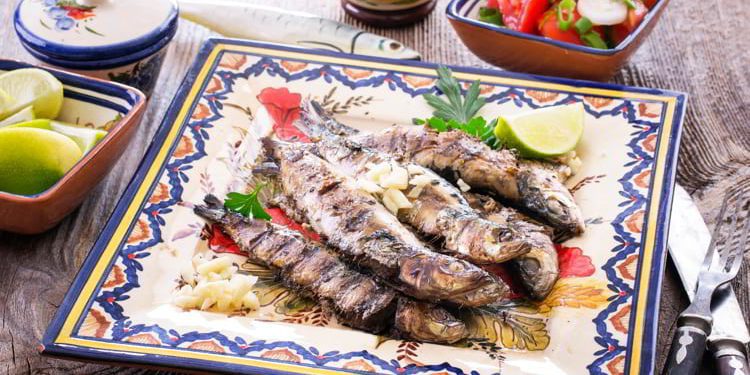Portugal is a small country, but there is a definite geographic barrier between the country’s northern heartland and the Algarve: the Caldeirão and Monchique mountains.
Customs In The Algarve
While they speak the same language, Algarvios have different food and drink, dress, music and dances, and customs from other Portuguese.
The main reason is that the south was last to be reconquered from the Moors, so some Moorish customs lived on. And, paradoxically, just to show that they really were Christians after all, some Algarve customs are totally contrary to what Islam requires.
Local peasant women wear very short wide skirts. Today you don’t see many peasant women but look out for folk dancers from local dance clubs, called ranchos folclóricos, women with legs visible twirling around.
More traditional twirlers wear white lace bloomers, so you don’t see their panties as they twirl. (A rancho is not a homestead but a dance troop in Portuguese.)
Unlike the somber black-clad singers of fado music, always in a minor key like something Middle Eastern, Algarve music is lively, full of occasional hoots and hollers, clapping and jumping. Sometimes it looks and sounds like U.S. square dancing. The men wear buttonless jackets and wide flat hats, not 10-gallon ones, while real peasant men wear fedoras. Nobody wears a fez or a turban—or a chador.
Counter-Moorish, too, are nibbles featuring pork and the local Algarve firewater, called Medronho, made from the fruit of the Arbutus unedo (Irish strawberry) tree, which grows in the mountains and is sold by woodsmen.
Arbutus is made into strong drink because it tastes bad. If you drive up the mountain to buy Medronho, do not take a drop before returning home, because Portugal has very strict drunk-driving laws and the stuff is pernicious.
Other bits of Algarve life owe a lot to the Moors. The biggest survivor is the system of watercourses and donkey-driven pumps to irrigate fields, which look like something from the Nile rather than the Algarve’s Rio Arade. Other pumps are driven by a sailed windmill, looking Dutch.
The names of many Algarve fruits and vegetables come from Arabic. Damascos are apricots, alface lettuce. The houses have local handicrafts: almofadas (cushions) and alcatifas (rugs), which are Arabic words. But then they also have maples, which is upholstered furniture, named after a British shop.
Food Is Another Moorish Relic
Cataplana
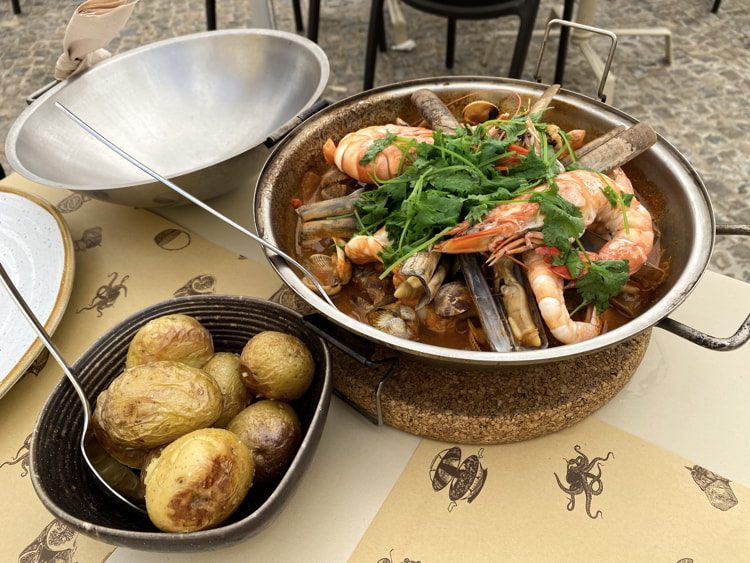
The famous cook pot of the Algarve is called a cataplana. This is made of two copper or tin bowls that close with a snap. In it goes whatever is to be cooked today: ameijoas (clams), chouriço (sausage), camarões (shrimp or prawns), and jamón (ham), along with onion, garlic, coriander, and spices. You often see clam diggers at low tide hauling out mussels from the Arade.
Cataplana dishes are made with rabbit, hare, and other game. The hermetically sealed bowls act as a primitive pressure cooker. Moroccans use a pottery device, a tajine, which has a chimney usually opened during cooking; the cataplana is sealed till the end.
Percebes
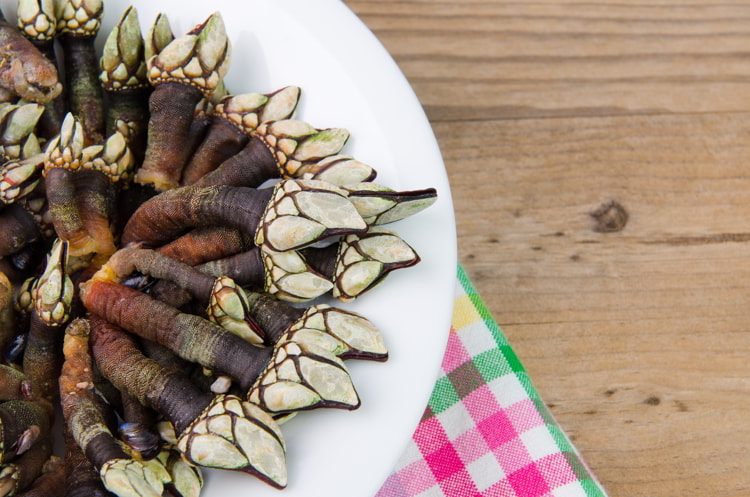
Another famous dish is barnacles, percebes, because fisherfolk remove them from their boats and you may as well eat them. It’s an acquired taste. A lot of fish and shrimp is simply barbecued on the grill, dabbed perhaps with oil and a bit of the hot sauce called piri piri.
Get Your Free Portugal Report Today!
Simply enter your email address below and we'll send you our FREE REPORT — Portugal: The World’s #1 Retirement Haven...
Grilled Sardines
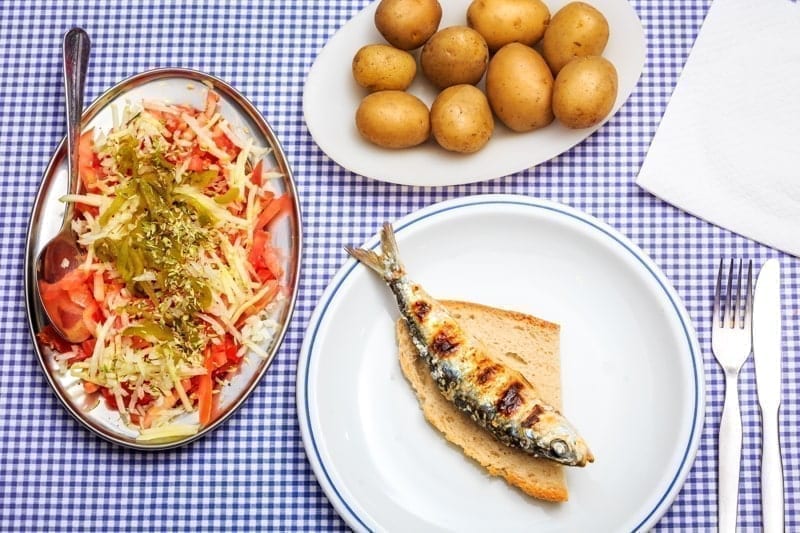
The national dish of all Portugal is grilled sardines. They are ultra-fresh, simply given a dash of salt (big or Kosher salt, not table salt), and tossed on the barbie. They are served with small red boiled potatoes and eaten with a fish fork and knife.
You slit the critter down its backbone, remove the skin, extract the fillet from the bone, head, and tail, and eat it. Then the other fillet. Turn it over and repeat. By the 24th fillet, you will have mastered the knack.
Fresh sardines are good for you as their oil is full of good cholesterol. Nothing out of a can comes close to tasting as good.
Frango No Churrasco
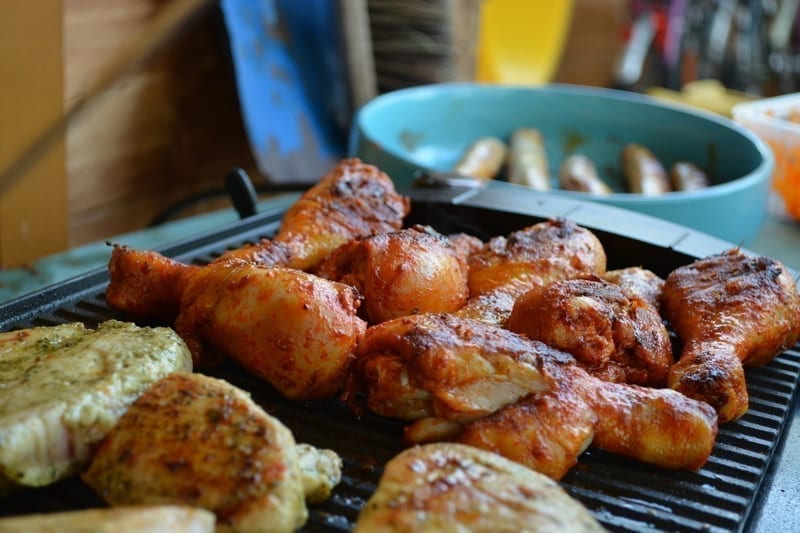
But the best grilled food of the region I think is frango no churrasco, chicken from the grill. It is good because the chickens cross the road. They are not raised in coops and are eaten while still young and small. They cross the roads near the spa of Monchique, high up Mount Fóia from the coast, where it is traditional to hike, bike, or drive to special restaurants for your Sunday frango. It comes two ways: com or sem piri piri. Try a bit of each.
A roast sheep or goat may be the center of a feast, as in the Arab world, but then sometimes a suckling pig is the feature instead.
Desserts
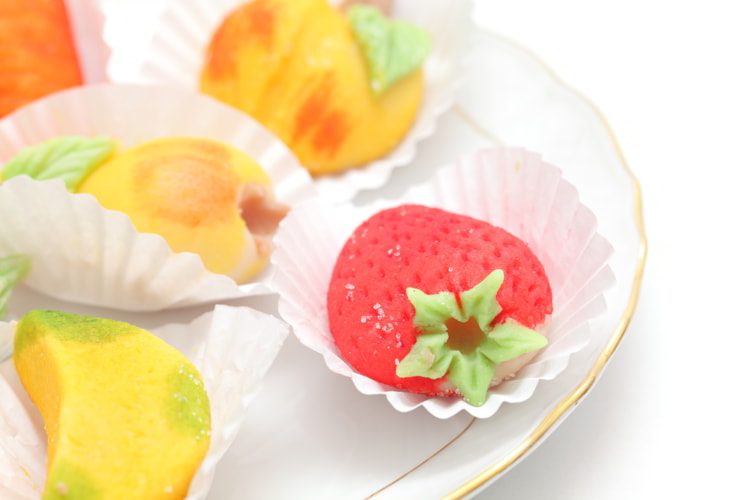
The unhealthiest Moorish relic in the Algarve diet is dessert. Cakes, marzipan, and buns are loaded with eggs, sugar, and honey, and, unless you have made them yourself with great effort, even a little bite is the end of your diet.
Hard as it can be, avoid the pastry shops, indulging only for special occasions. Eat frutas instead.
Now For Customs
If you predict something good will happen, add the word “oxalá” on the end. (The “x” is pronounced like “sh” and the stress is on the last “a.”) Despite the ferocious Inquisition, which tortured Algarvios for heresy until the 1730s, it is a remnant of “inshallah,” meaning “if Allah wills.”
Vivian Lewis
Portugal Insider






